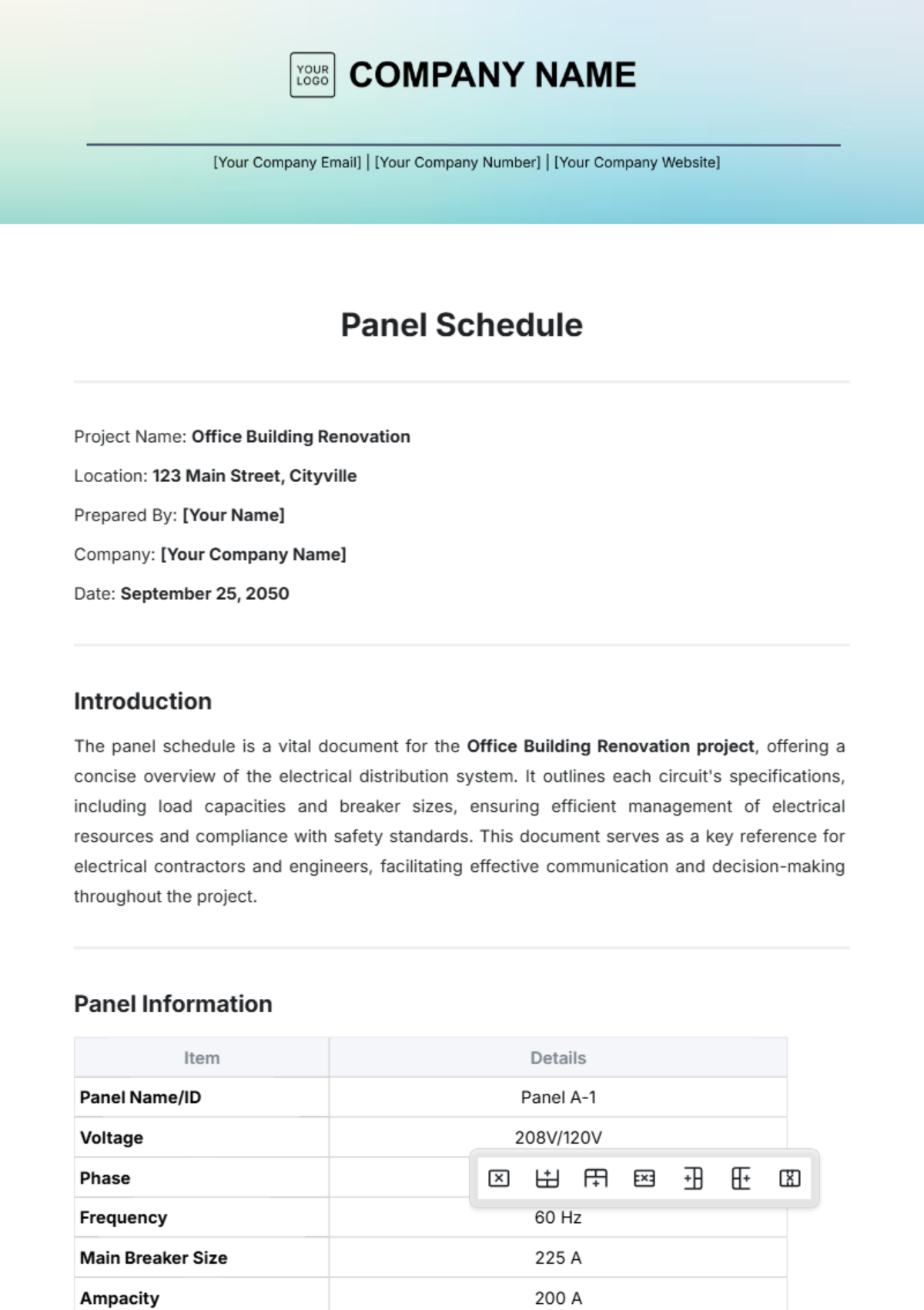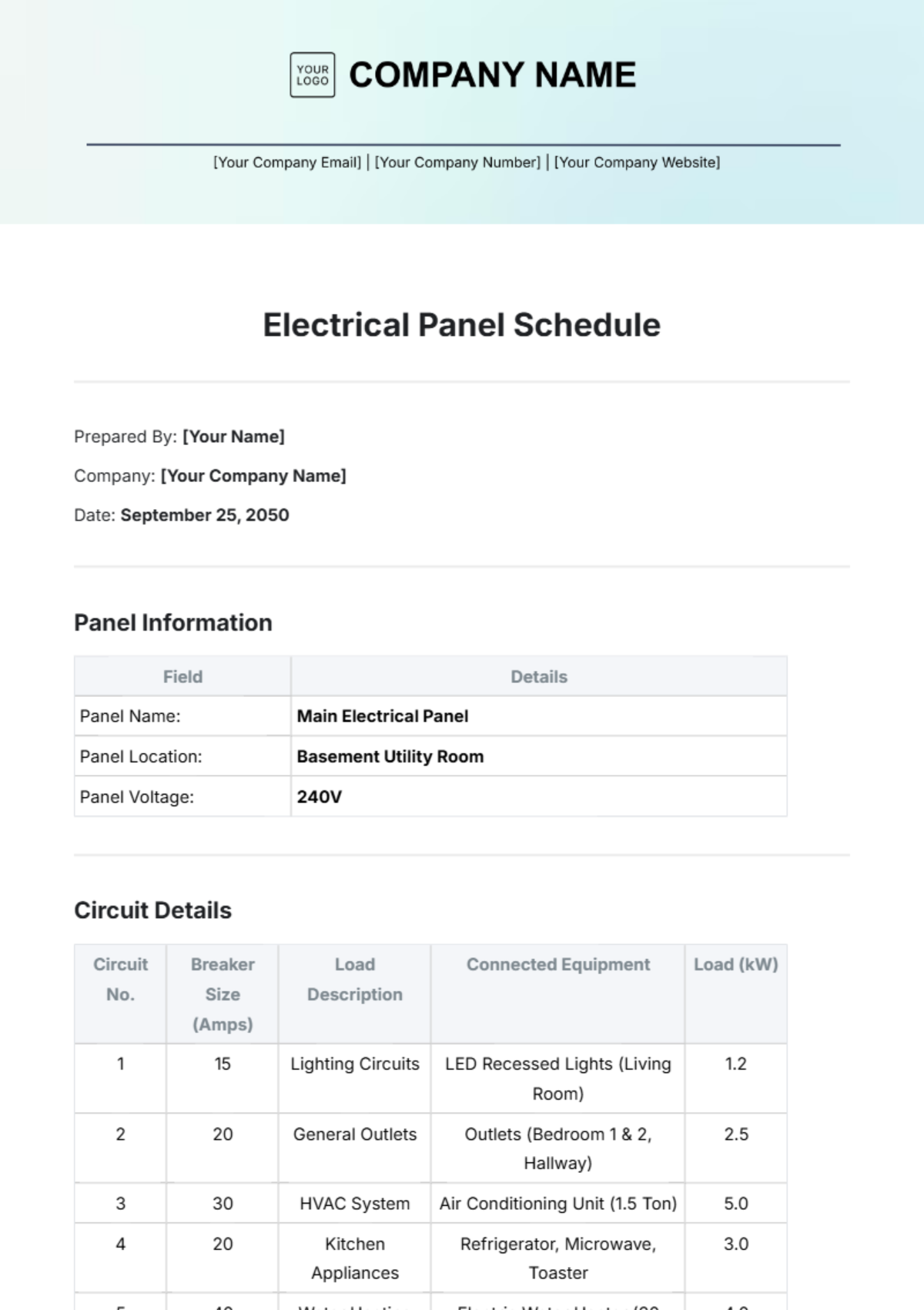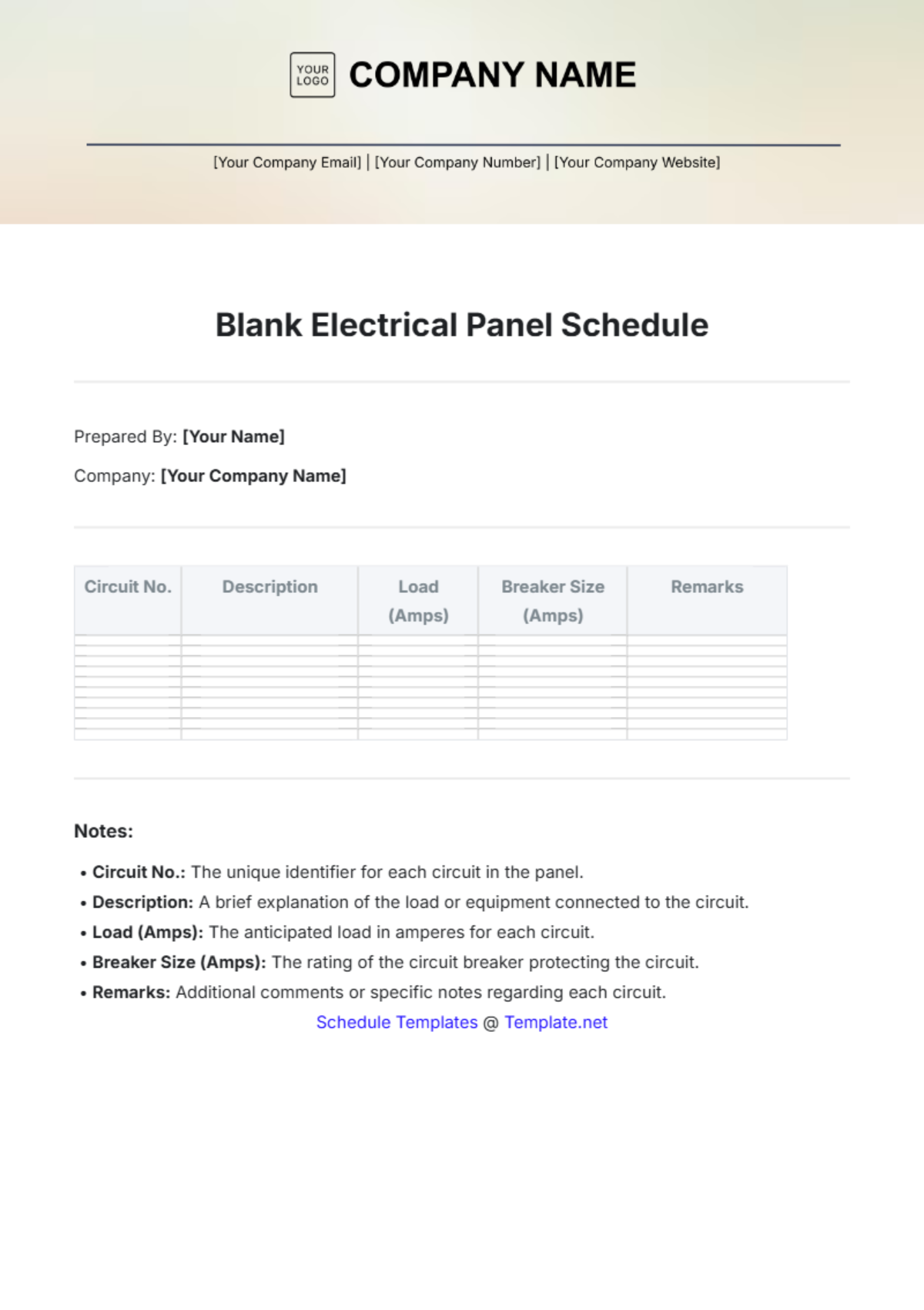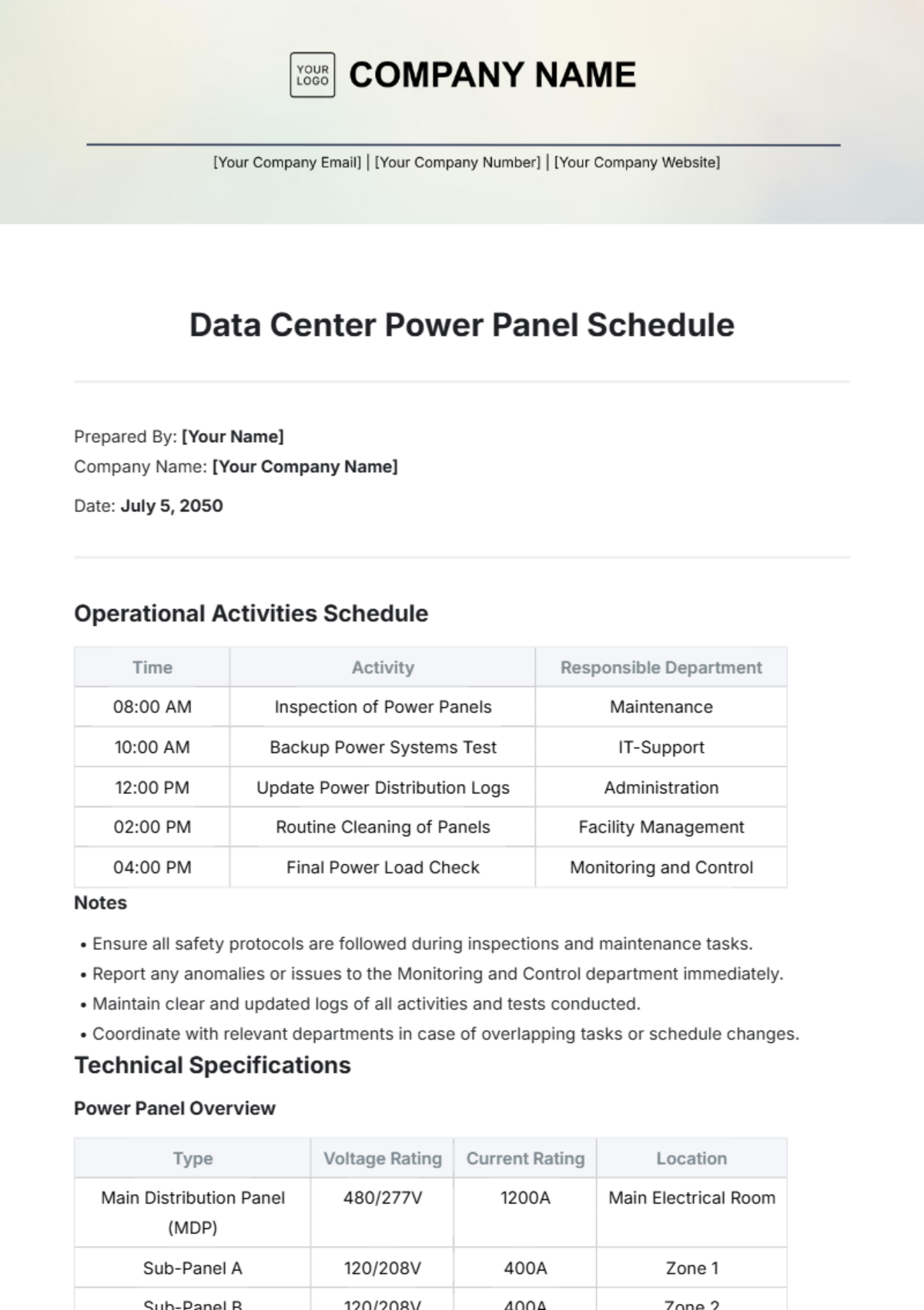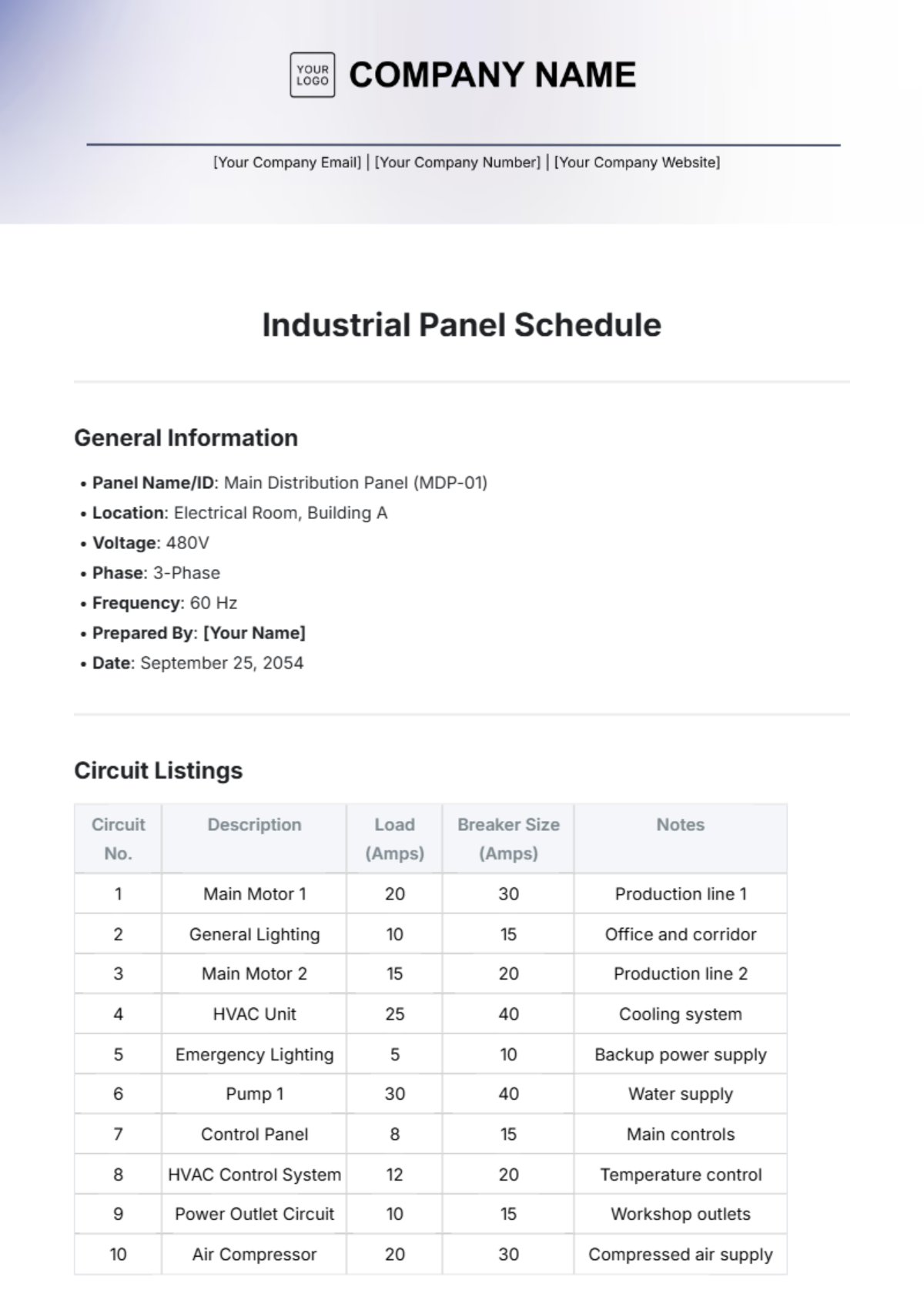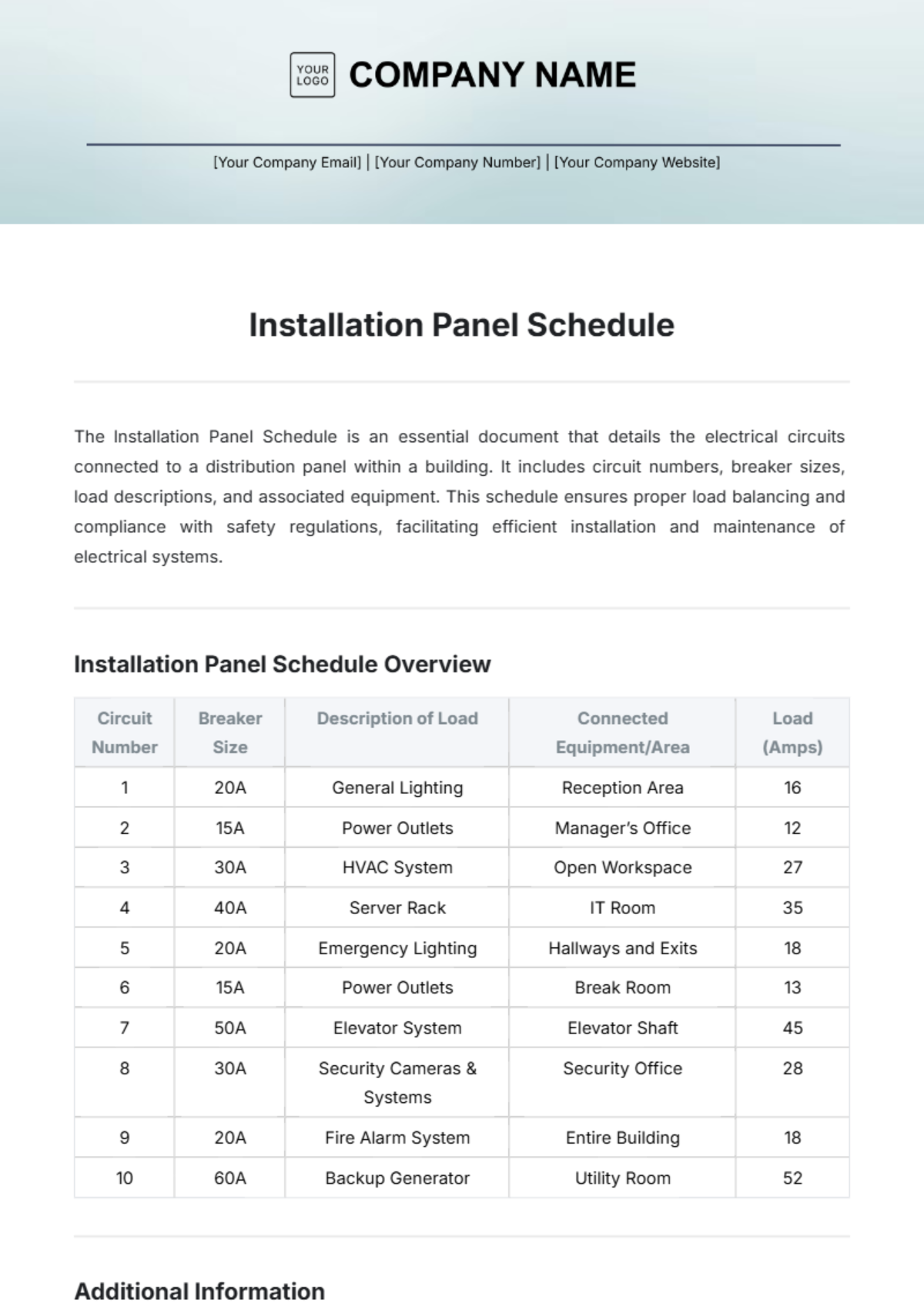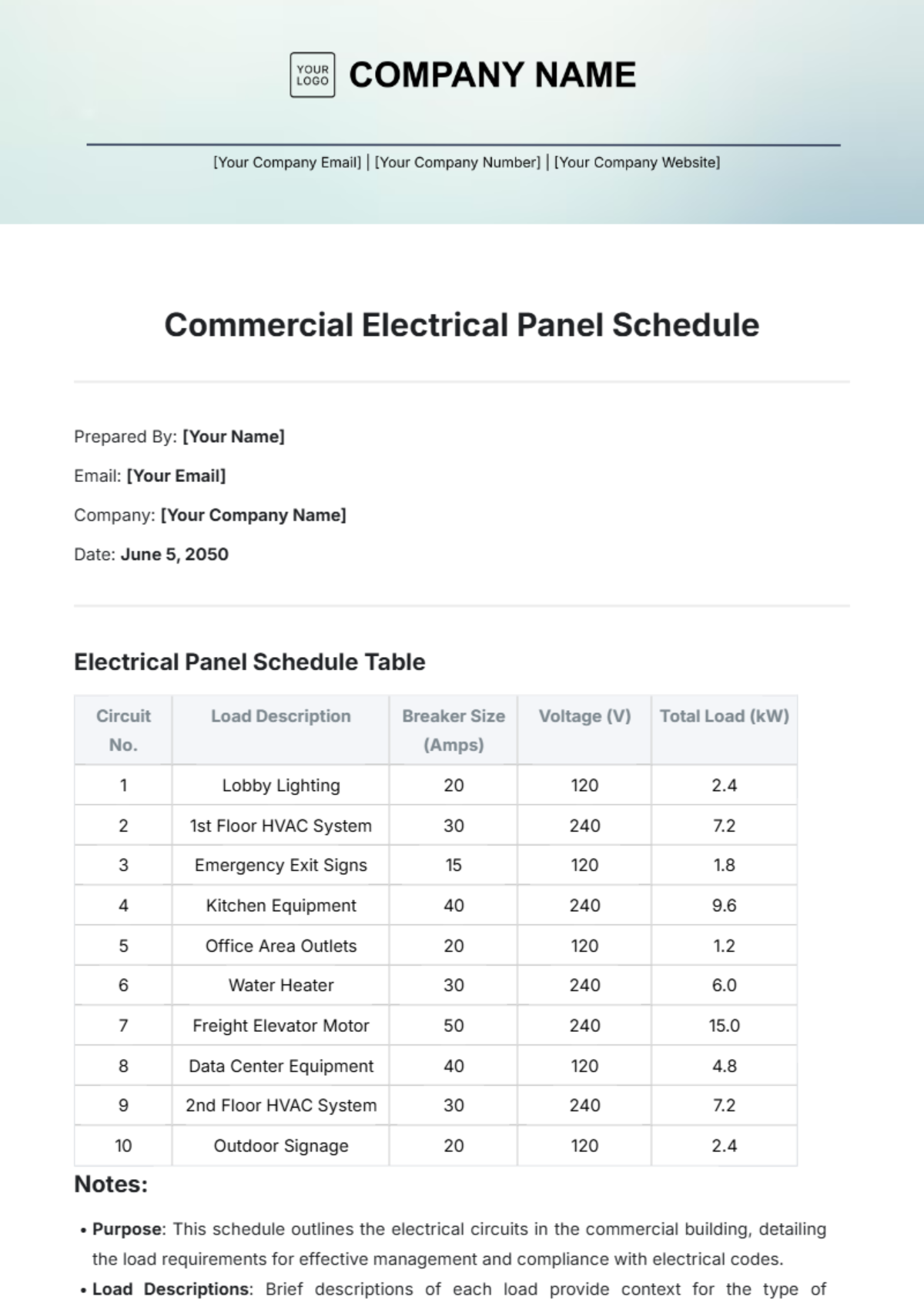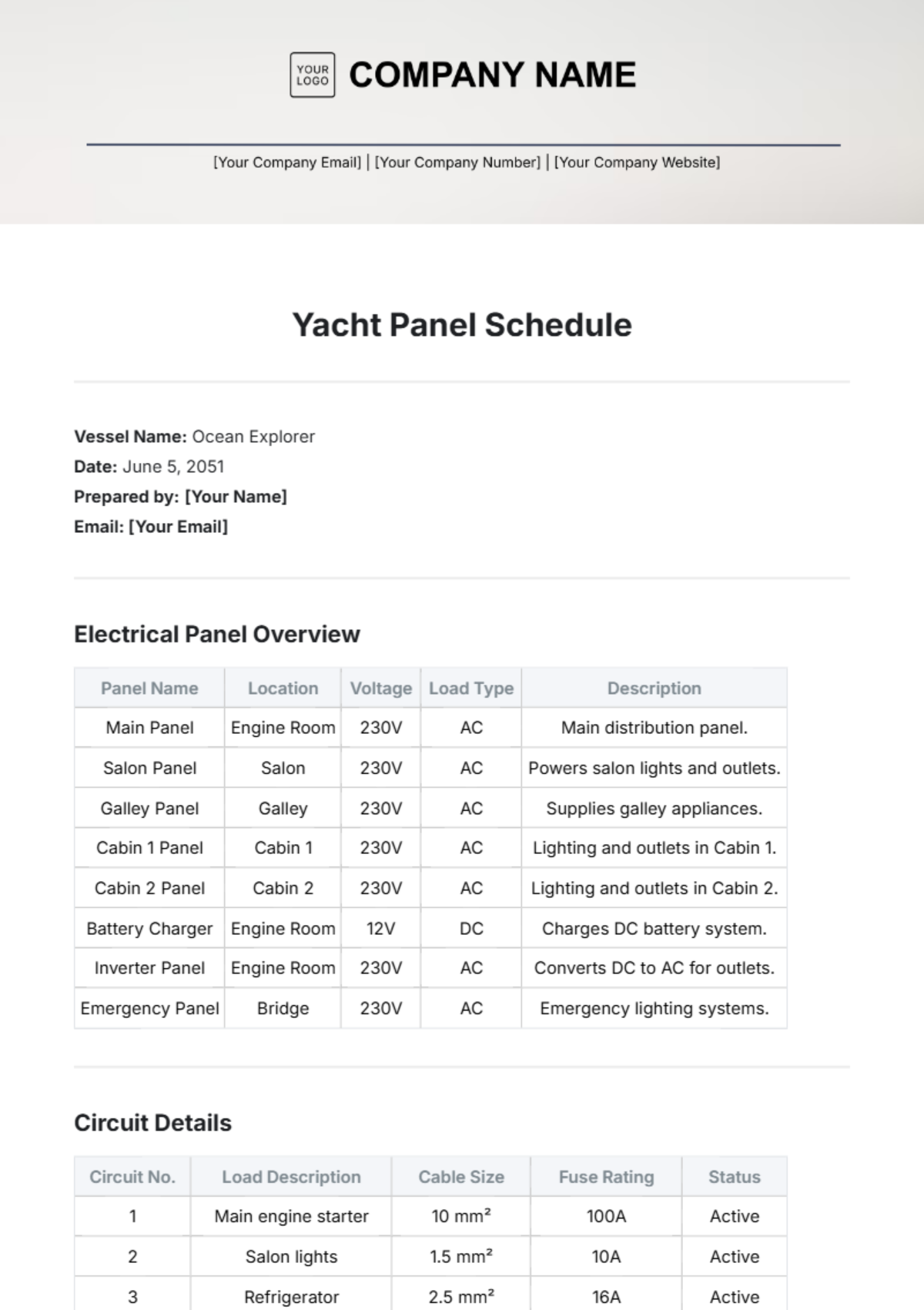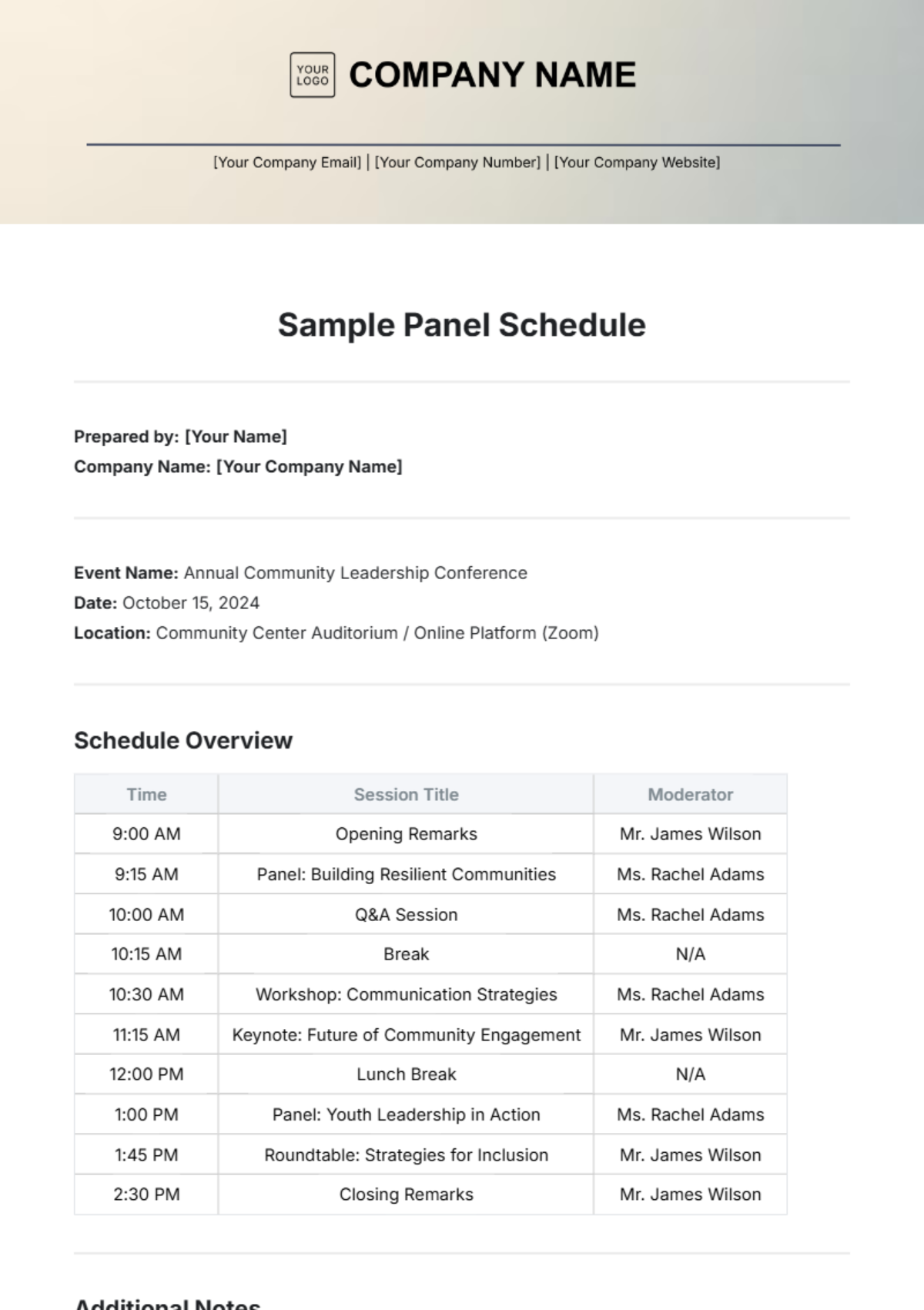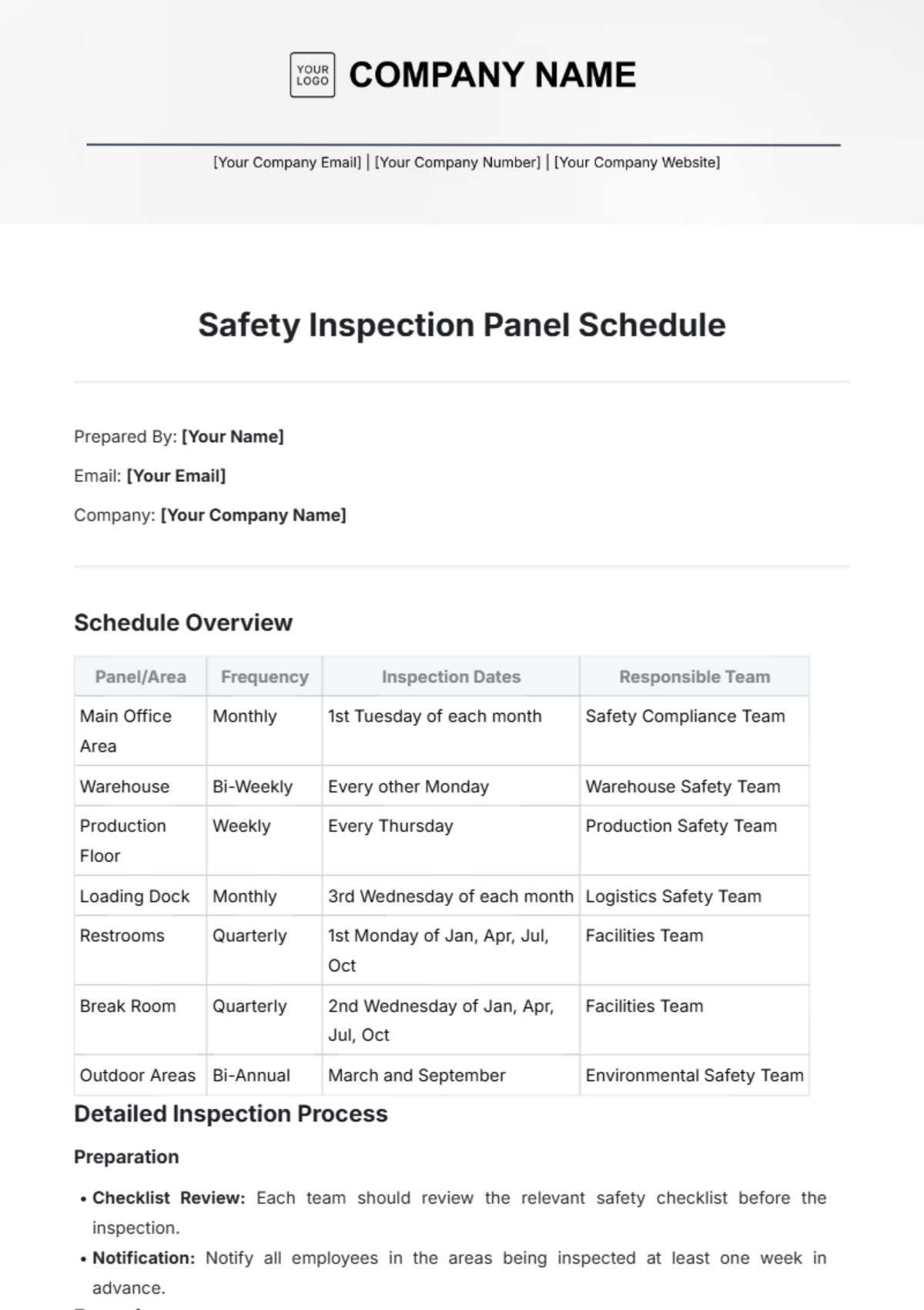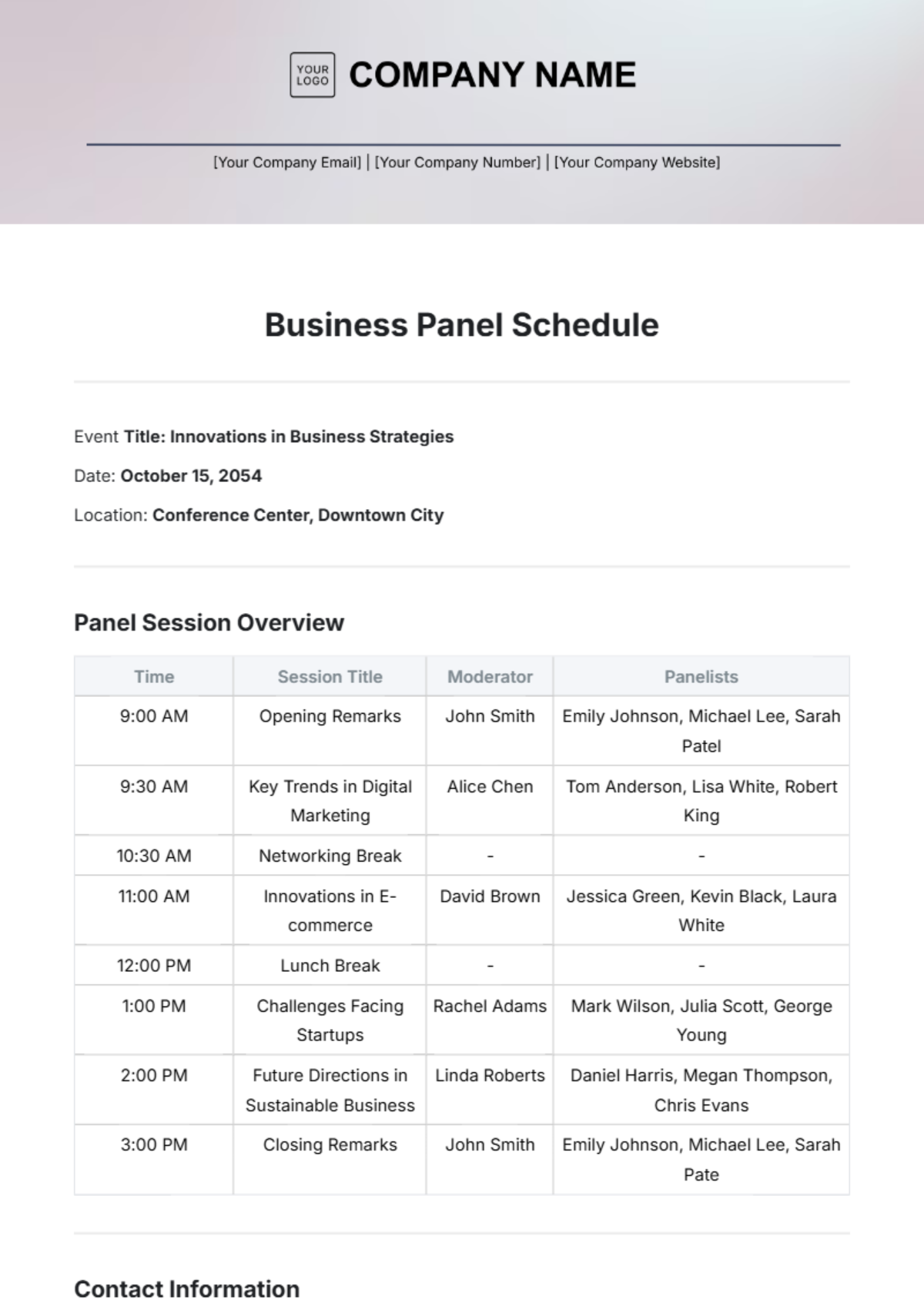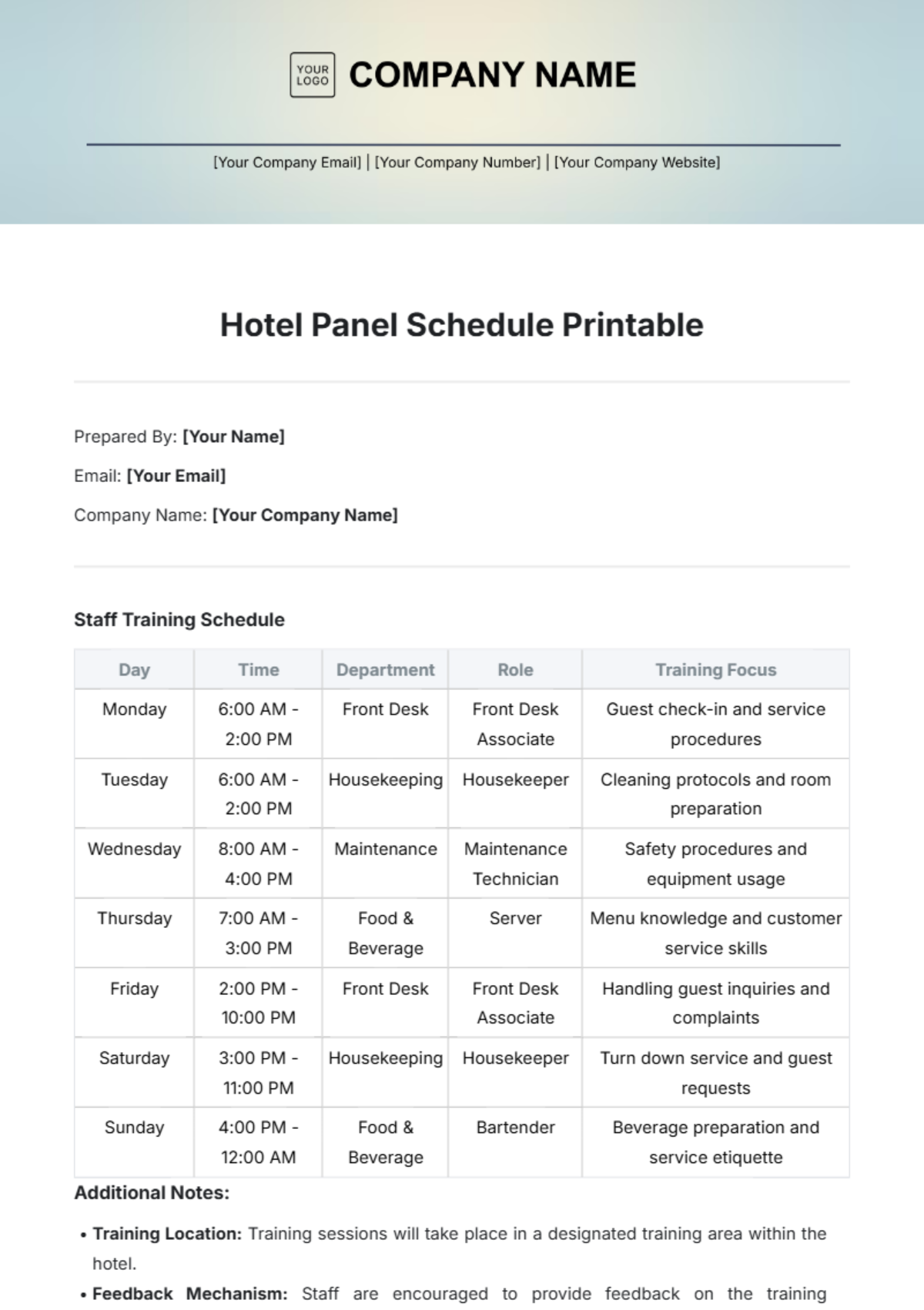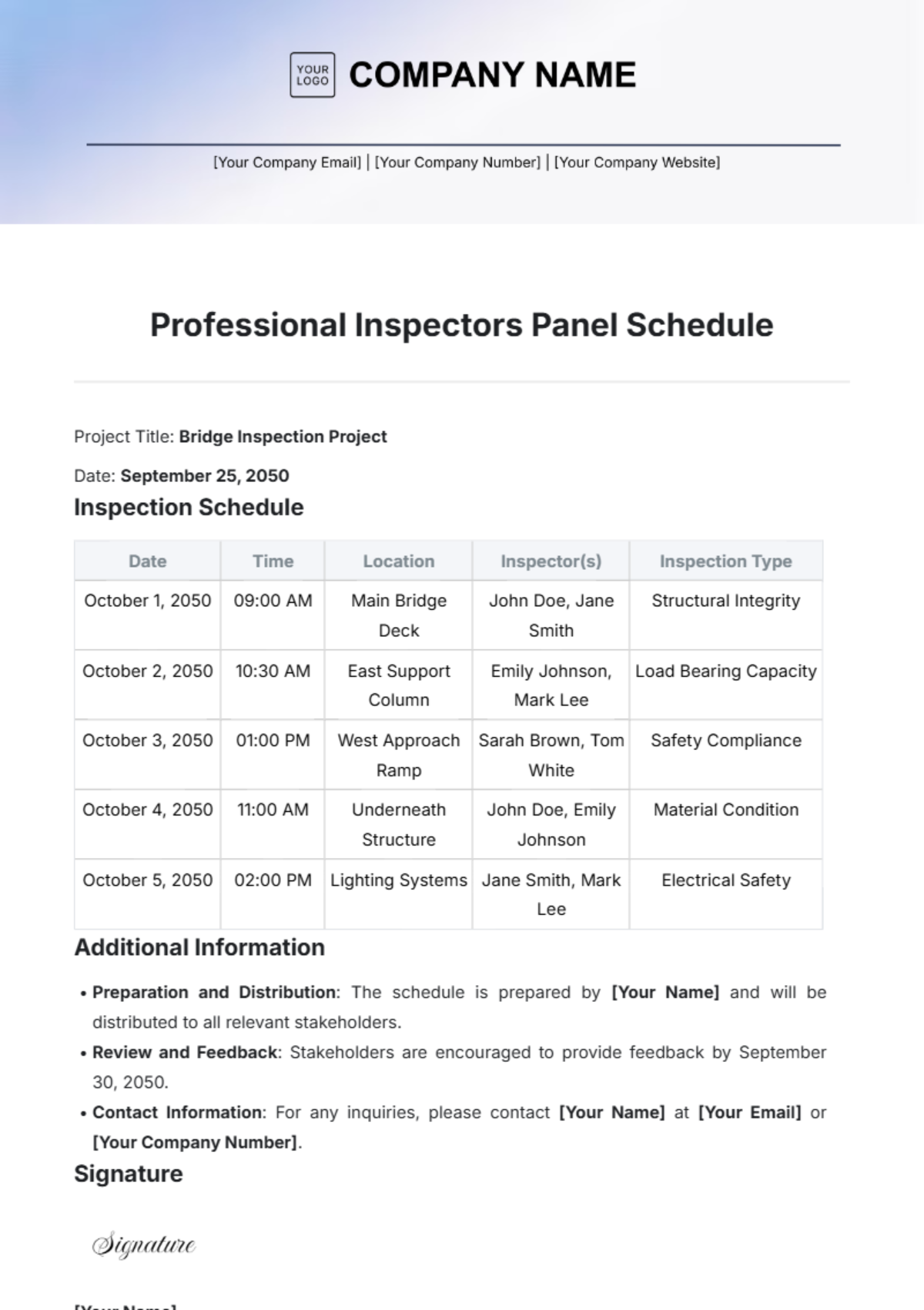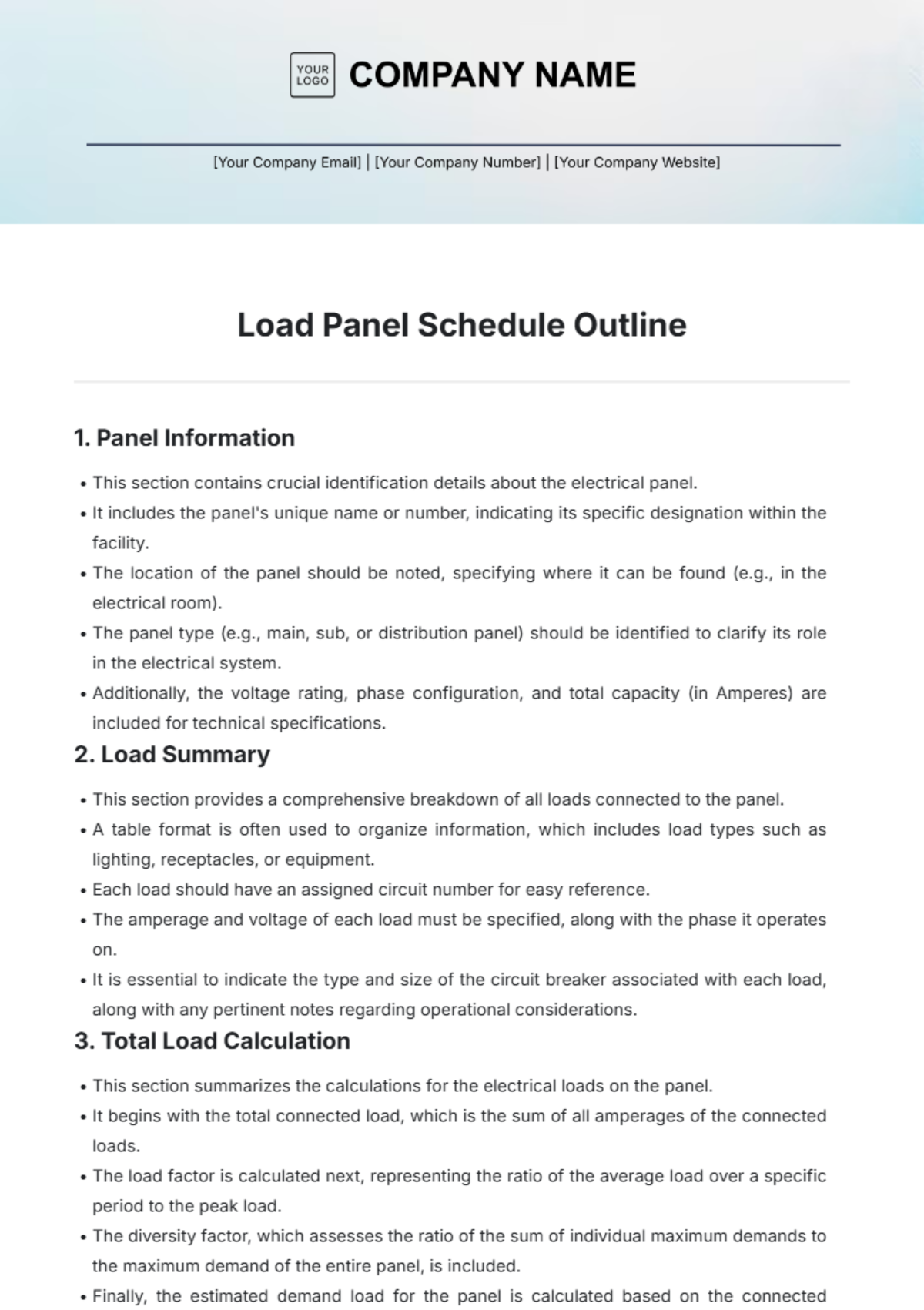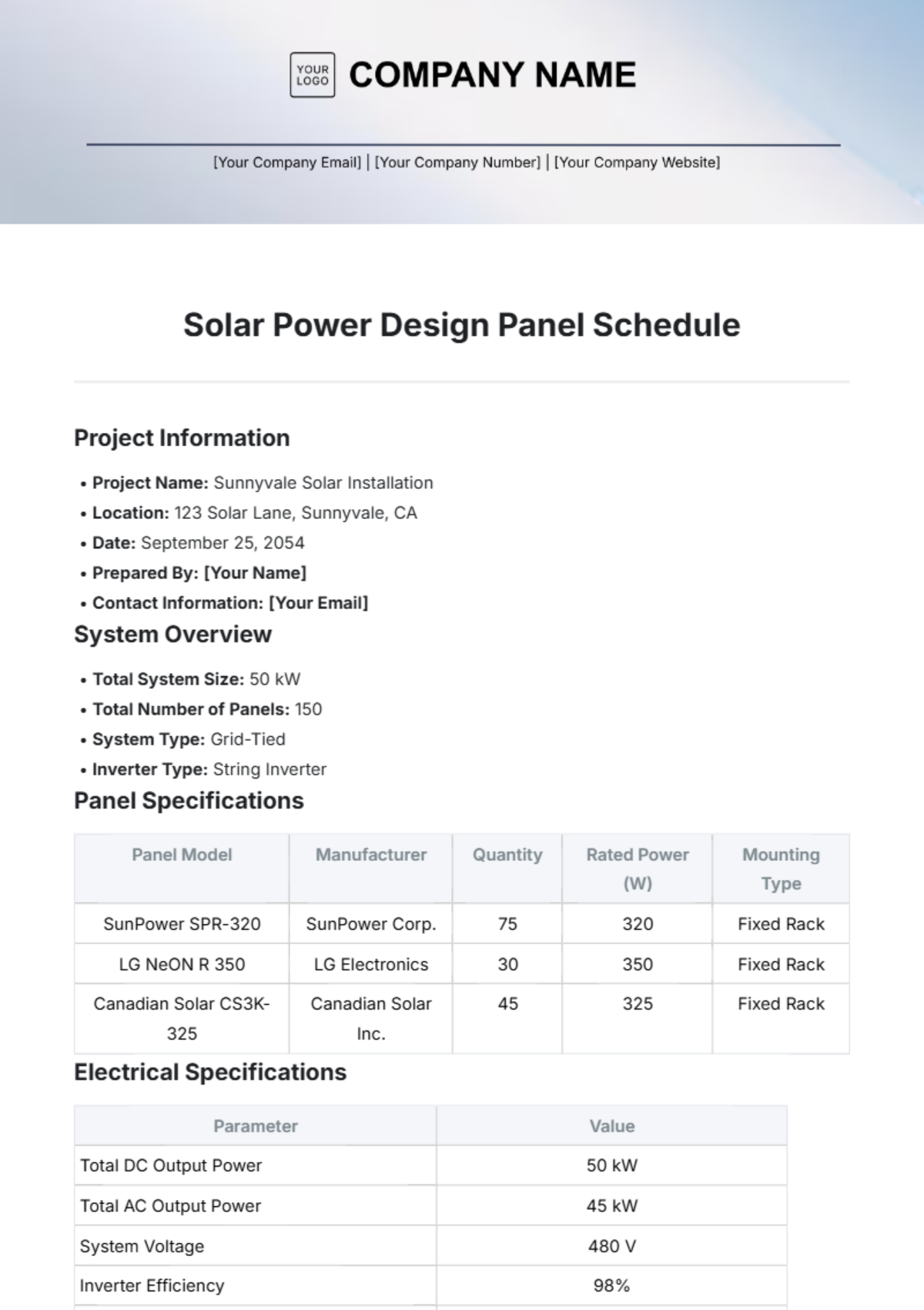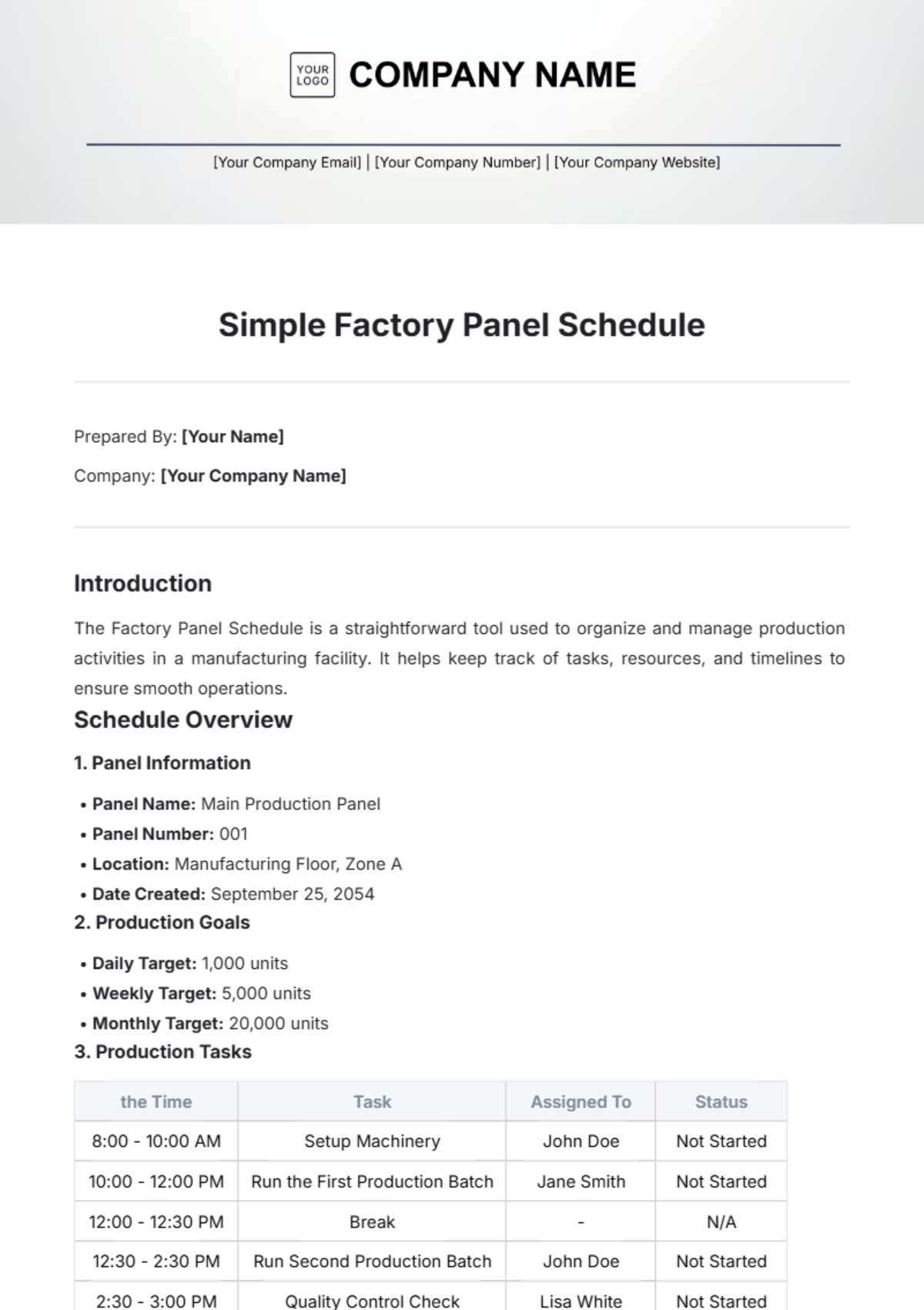Load Panel Schedule Outline
1. Panel Information
This section contains crucial identification details about the electrical panel.
It includes the panel's unique name or number, indicating its specific designation within the facility.
The location of the panel should be noted, specifying where it can be found (e.g., in the electrical room).
The panel type (e.g., main, sub, or distribution panel) should be identified to clarify its role in the electrical system.
Additionally, the voltage rating, phase configuration, and total capacity (in Amperes) are included for technical specifications.
2. Load Summary
This section provides a comprehensive breakdown of all loads connected to the panel.
A table format is often used to organize information, which includes load types such as lighting, receptacles, or equipment.
Each load should have an assigned circuit number for easy reference.
The amperage and voltage of each load must be specified, along with the phase it operates on.
It is essential to indicate the type and size of the circuit breaker associated with each load, along with any pertinent notes regarding operational considerations.
3. Total Load Calculation
This section summarizes the calculations for the electrical loads on the panel.
It begins with the total connected load, which is the sum of all amperages of the connected loads.
The load factor is calculated next, representing the ratio of the average load over a specific period to the peak load.
The diversity factor, which assesses the ratio of the sum of individual maximum demands to the maximum demand of the entire panel, is included.
Finally, the estimated demand load for the panel is calculated based on the connected loads and relevant factors.
4. Circuit Breaker Information
This section details the specifications of the circuit breakers used within the panel.
A table format can effectively display information about each breaker, including its type (e.g., standard, GFCI).
The size (amperage rating) and number of poles for each breaker should be indicated.
The manufacturer and model number provide important information for replacement or maintenance purposes.
5. Future Expansion Considerations
This section discusses potential future needs and modifications for the panel.
It identifies any anticipated new loads that may require additional capacity, along with estimated amperage for each new load.
Planned modifications to existing circuits or the panel configuration are noted to accommodate these future changes.
6. Notes and Comments
This section serves as a space for any additional observations or recommendations.
It can include insights on regular maintenance schedules, safety checks, and any special considerations regarding load management.
Relevant observations regarding the panel's performance and operational efficiency may also be documented here.
